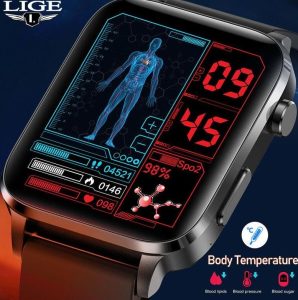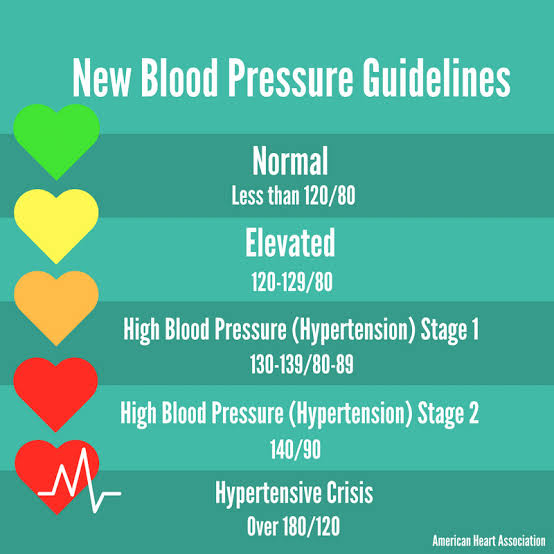Growing up, my two major causes of death were brief illness and sudden death. Looking back in hindsight, it was clear that in both cases, they will probably pre mitigating circumstances that led to the death of these people but we now have better diagnoses, one thing about healthcare is that early detection prevents catastrophic events. Now we know that certain indicators tell us when our body is functioning at its best and when it’s in danger.
Thankfully, in the 21st Century, we have the internet with loads of information, but the information is limited without knowledge of what it is about, nowadays we have all kinds of gadgets to give us an indication of how our body is feeling and from the IWatch to other brands, there is a spread of health indicator wristbands, and now more people are more aware of their state of health.
Here are some essential body health indicators:
Body Mass Index (BMI): The BMI is a measure of body fat based on height and weight. It is calculated by dividing a person’s weight in kilograms by the square of their height in meters. A BMI between 18.5 and 24.9 is considered healthy, while a BMI of 30 or higher is considered obese.
Blood Pressure: Blood pressure measures the force of blood against the walls of arteries. Normal blood pressure is typically around 120/80 mmHg, while high blood pressure (hypertension) is defined as a reading of 140/90 mmHg or higher.

Heart Rate: Your heart rate is the number of times your heart beats per minute. Adults’ normal resting heart rate ranges between 60 and 100 beats per minute.
Cholesterol: Cholesterol is a waxy substance found in the blood. High levels of “bad” cholesterol (LDL) can increase the risk of heart disease, while high levels of “good” cholesterol (HDL) can lower the risk.
Blood sugar: Blood sugar (glucose) levels can indicate the risk of developing diabetes. Normal fasting blood glucose levels are typically between 70 and 100 mg/dL, while levels above 126 mg/dL indicate diabetes.
Body temperature: Normal body temperature ranges from (36.5°C) to (37.5°C). A temperature above (38°C) indicates fever and may indicate an infection or illness.
Hydration: Proper hydration is essential for overall health. A person’s hydration level can be measured by urine colour, with lighter colours indicating better hydration.
It’s important to note that these indicators are not the only measures of health and that individual factors such as age, gender, and medical history can impact what is considered normal or healthy. Consult with a doctor for personalized guidance on your health.
But this information is not useful without the benefit of a trained specialist like a doctor to help you better interpret it and guide you on the next line of action. That’s why I talked about the benefits of health insurance in one of my previous articles. Coupled with this information from these tools, you can quickly and promptly head to your healthcare provider to help you interpret these results and guide you on your next line of action.
We need to be more conscious of our state of health to try and bring down the cases of people just doubling down, collapsing in our offices, or dying in their sleep.
Diligence, observance, and proper record-keeping give us a better understanding of the state of our health.
Home care should never take the place of a regular medical check-up; at least once a quarter, a full-spectrum medical check-up of all our essential vital functions should be done at an accredited lab.
Another benefit of these health indicator watches is that they also help to track your level of activity or exercise, and you can monitor if you are meeting targets. For example, the very basic minimum number of steps every human being needs to take a day to just function is 600, while the average should be 6000 to be in good health, so if you’re doing less than that, you’re probably killing yourself.
You don’t need to buy the most expensive high-end devices, but shelling out big bucks for the iWatch can help you call the doctor in case of a medical emergency.
Fortunately for me, I have health insurance that covers comprehensive tests, so I was able to do my medical tests regularly, and I found out that I have high cholesterol and low potassium, which was a lot better than I expected because I went in there with all of my fears about my blood sugar level and prostrate.
Most illnesses can be deadly and the key to prevention is early detection, it is vital to know your metrics to know when you’re too high and when you’re too low and to know what to do about that quickly.
OVIGHO RICHARD OKOJEVOH-CIEH.SMC.CEH.PMP. is a Scrum Master Certified, Project Management & HSE Professional, and the Executive Secretary of the Society for Health, Safety, and Environmental Education










